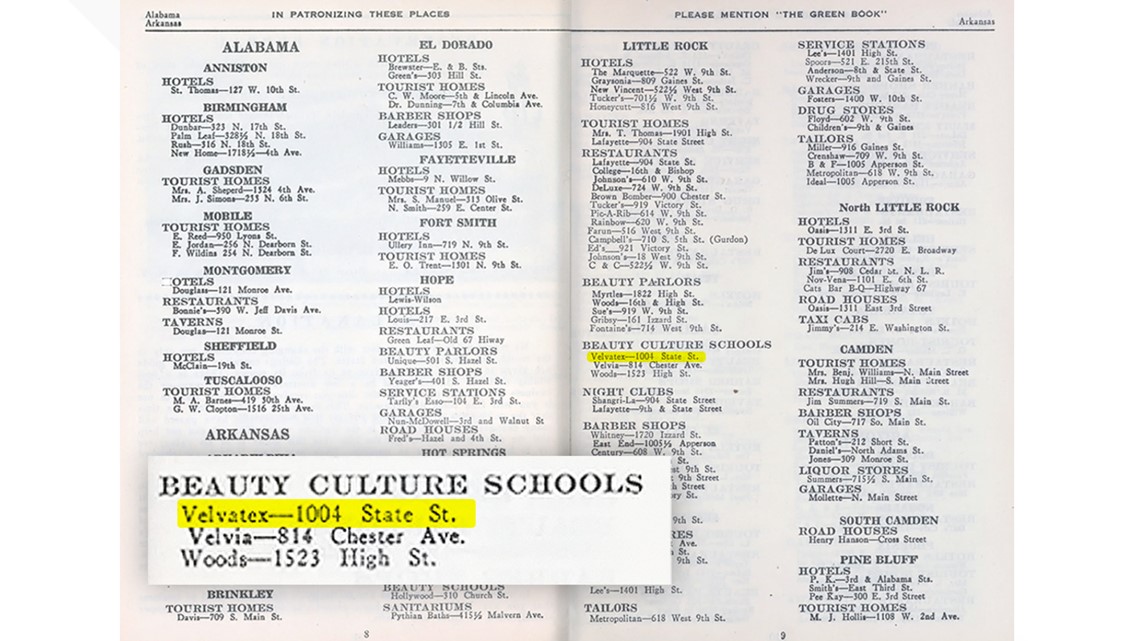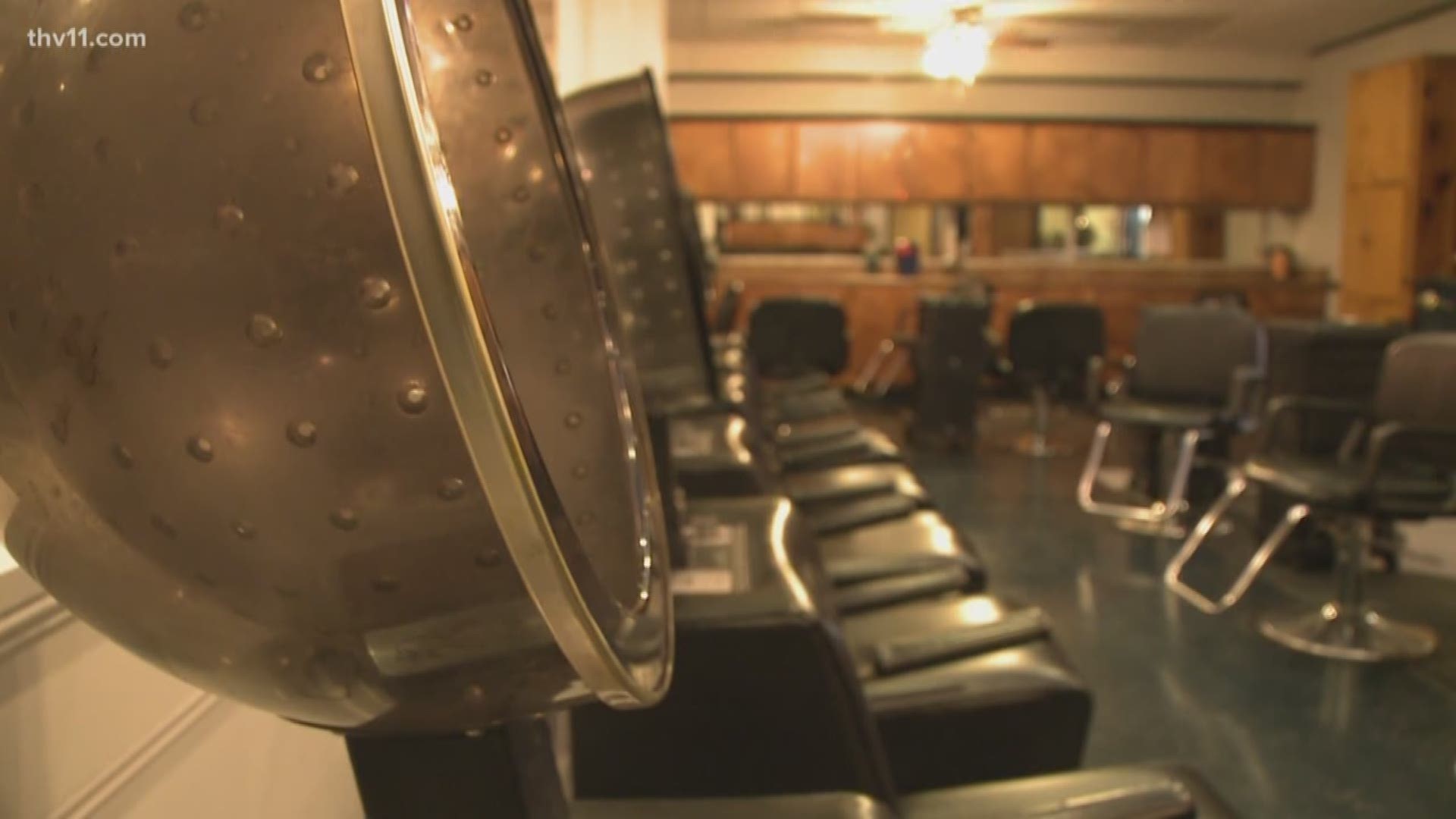LITTLE ROCK, Ark. — The Negro Motorist Greenbook was an African-American's travel guide during a hostile time that many still remember.
The annual road-trip guide began in 1936 by postal worker Victor Green, who aimed to keep black Americans safe from going into southern businesses where they weren't welcome.
In an effort to avoid the violent social interactions, The Greenbook, as it became known as, was updated each year with businesses that accepted black customers.
During this period, southern states had policies in place that outwardly segregated people of color from white people in society such as separate public transportation and schools. This time is referred to as racial segregation or Jim Crow.
While a lot of those businesses no longer exist, there is one still standing right here in Little Rock: Velvatex College of Beauty.
The first owner was Mrs. E.M. Patterson who established the cosmetology school in 1929. Her daughter was the one who passed the school on to Barbara Douglas, the current owner.
“A lot of things have changed,” Douglas said.
And she's right.
Velvatex is one of the few businesses listed in The Negro Motorist Greenbook that is still standing today.
The beauty culture school was once recorded as a resource in the annual guidebook used by African-American road-trippers in the 1930s, 40s, 50s and 60s.


People traveling during this time were often confronted by hate in the still-segregated south.
“It was difficult to find places like lodging… to find restaurants to eat at.. because of course, this is the high point of Jim Crow segregation, where you have these separate and unequal services,” said Executive Director of the Mosaic Templars Cultural Center Christina Shutt.
Shutt said the Greenbook has become the only record of many businesses that are now lost in time.
“One of the things that the Green Book does is, it tells us, again, this kind of snapshot of what African American life was like. It helps conceptualize things.”
----------------------
“There will be a day sometime in the near future when this guide will not have to be published. That is when we as a race will have equal opportunities and privileges in the United States. It will be a great day for us to suspend this publication for then we can go wherever we please, and without embarrassment.”
- Victor Green, Creator of The Greenbook
Green died four years before the civil rights act was passed.
The last Greenbook was printed in 1967.

